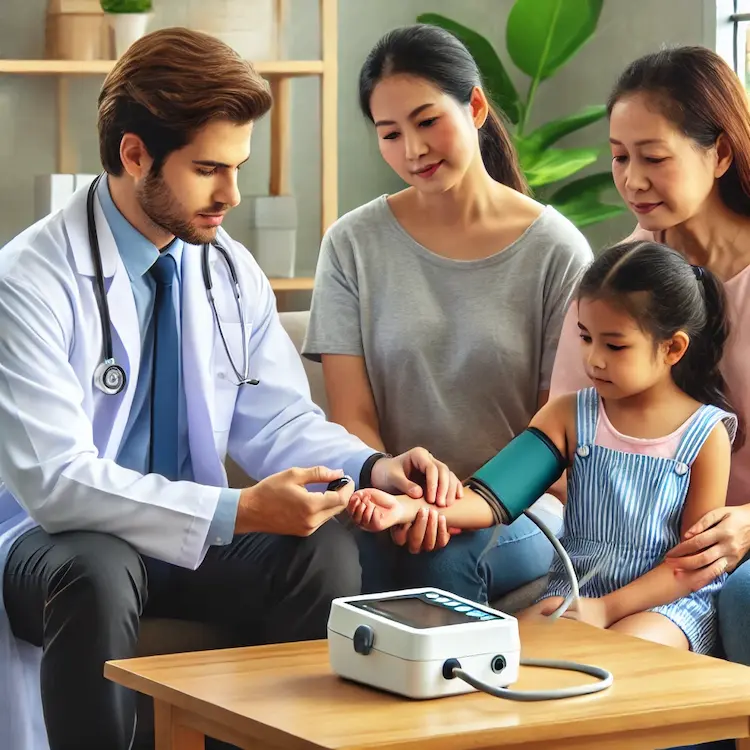Home Blood Pressure Monitoring (HBPM) has become an essential tool for managing hypertension, especially in light of the growing global concerns surrounding cardiovascular diseases. The accessibility of HBPM devices, however, varies significantly across different socioeconomic groups. Socioeconomic factors such as income, education, location, and employment status can significantly impact whether individuals have access to HBPM tools, which in turn affects their ability to manage their health effectively.
This article delves into the impact of socioeconomic factors on HBPM access, explaining the different barriers faced by individuals from different backgrounds, the societal implications of these disparities, and providing practical advice to mitigate these challenges.
One of the most significant barriers to HBPM access is income. High-quality HBPM devices often come with a significant price tag, and for lower-income individuals, this is a luxury they cannot afford. Even when subsidized by insurance, copays can still be a burden. Additionally, the cost of replacement devices and batteries, which may be needed over time, can further deter usage. Lower-income individuals may also lack access to pharmacies or clinics where they can monitor their blood pressure regularly without the cost of home devices.

Education plays a crucial role in health management. Individuals with lower levels of education often have limited health literacy, which means they may not fully understand the importance of monitoring blood pressure or how to use HBPM devices effectively. Additionally, they may not have the necessary knowledge to interpret the data provided by the devices, further hindering their ability to manage hypertension effectively.
Access to healthcare services, including home blood pressure monitoring, is heavily influenced by geographic location. People living in rural or underserved urban areas may have limited access to pharmacies, clinics, or healthcare providers who can advise them on HBPM devices. Moreover, rural areas may not have high-speed internet connections, making it difficult for individuals to use digital HBPM devices that require connectivity for syncing data.
The employment status of individuals also affects their access to HBPM devices. Those who are employed full-time may have employer-provided health insurance, which could subsidize the cost of a home blood pressure monitor. Conversely, part-time workers, the unemployed, or those working in gig economy jobs may not have such benefits, leaving them to shoulder the full cost of healthcare tools, including HBPM devices.
Limited access to HBPM can significantly affect an individual’s health outcomes. Hypertension, if left unmanaged, can lead to serious health complications, including heart disease, stroke, and kidney damage. Without regular monitoring, individuals may not be able to track their blood pressure effectively, increasing the risk of undiagnosed hypertension or ineffective treatment.
Socioeconomic inequalities contribute to broader health disparities. People from lower socioeconomic backgrounds are more likely to experience poor health outcomes due to limited access to healthcare resources, including HBPM. This can lead to a cycle of poor health, which exacerbates existing inequalities and increases the burden on healthcare systems.
When individuals do not have access to HBPM, it can result in more frequent emergency visits or hospitalizations due to complications from unmanaged hypertension. This increases the financial burden on public healthcare systems, particularly in low-income countries or regions with strained resources.
Governments and healthcare providers can play a key role in improving HBPM access by subsidizing the cost of devices for low-income individuals. Initiatives such as providing free or discounted HBPM devices, or including HBPM devices in insurance coverage, can go a long way in addressing the affordability issue.
Increasing health literacy through targeted education programs can empower individuals to use HBPM devices effectively. Public health campaigns that educate people about the importance of monitoring their blood pressure and provide guidance on using home devices can be an effective strategy.
Community-based health programs can also help bridge the gap in HBPM access. Nonprofit organizations or local health initiatives can offer free blood pressure monitoring services and distribute home monitoring devices to those in need.

Digital health tools, such as smartphone apps that sync with HBPM devices, can help individuals track their blood pressure and communicate with healthcare providers. These tools can be particularly useful for people in remote areas, as they reduce the need for in-person visits.
In conclusion, socioeconomic factors play a significant role in determining access to HBPM, which in turn impacts health outcomes and societal disparities. It is essential to address the barriers of affordability, education, and geographic location to ensure that all individuals have the tools they need to monitor and manage their blood pressure effectively. By implementing government support, health education, community-based solutions, and utilizing digital health tools, we can help reduce these disparities and improve overall public health.